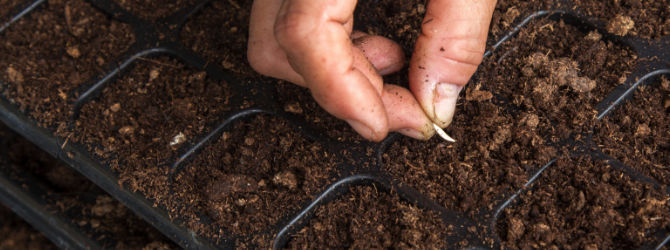Now that February is here and the days are getting longer, many of us are beginning to hear the song of the garden calling. Though things might still look empty and dreary (even if you have some overwintering veggies), there’s life stirring beneath the mulch and soil. From chitting potatoes and prepping beds to getting starts rolling and planting our earliest arrivals, the vegetable garden in February can be as busy as you’d like to make it.
In the Greenhouse, Coldframe, or Polytunnel
They are many veggies that can be started with a little (or a lot of) protection in February. Greenhouses are the most easily worked with, as a hard freeze will still affect cold frames and clothes, but it’s still worth getting started. Lettuce and radishes can be sown at this time, as well as summer-harvested cabbages, turnips and spinach.
For starts, now is the time for onions. Careful though—they’ll need at least 15C to germinate and if you don’t have that in your greenhouse, you’ll need to use a heating pad or take them inside and plop them down on your windowsill.
Many gardeners like to start off their chillies, peppers and tomatoes at this time of year, but unless you can add some artificial light it’s actually best to wait until March when the days are longer.
In the Garden Bed (Outside)
What you plant and when will really depend on where in Britain you’re located; the north can be as much as a week behind. If you live in a mild part of the UK you can plant out broad beans, carrots, jerusalem artichokes, arugala and peas in early February. (Everyone else should wait for late February.) Shallots can also be planted out, but they’ll benefit from a bit of protection (i.e. a clothe). Many folks believe that parsnips should be planted out now, but it really doesn’t hurt to wait until March for them. In truth, it may be from such early planting that the germination rate is so low.
One thing to be careful of is whether you’re soil is ready to be worked. Digging in water-saturated soil will damage its structure, doing more harm than good. To warm up and dry out your soil, cover your beds with clear polythene, cloches or fleece. To test if your soil is workable, simply dig down 6 to 8 inches and grab a handful of soil, making a ball out of it. Throw the ball up into the air. If the ball sticks together, the soil is still too wet. If it crumbles, it’s ready for planting.
Chitting Potatoes
You probably already have your seed potatoes by now (if you don’t there’s still time to order), and though it’s not yet time to plant them, you can certainly get them started. This is called ‘chitting,’ or pre-sprouting before planting. Many say it benefits main crops potatoes but not earlies. Others say it does no good at all. Either way, it does no harm and many recommend it.
To chit your potatoes simply put them in a cool, frost-free place where they get some light but not direct sunlight. Soon you’ll see short, stubby shooting spring up, giving your potatoes a bit of a start come planting time.
Other Tasks for the Garden in February
February is the final time to get your entire garden cleanup finished before the new growing season comes in with a roar in March. Make sure you have all your potting containers cleaned and ready to go and any debris removed to the compost piles (any that’s not being used for mulch, of course). And take heart, the longer days will soon be upon us.
